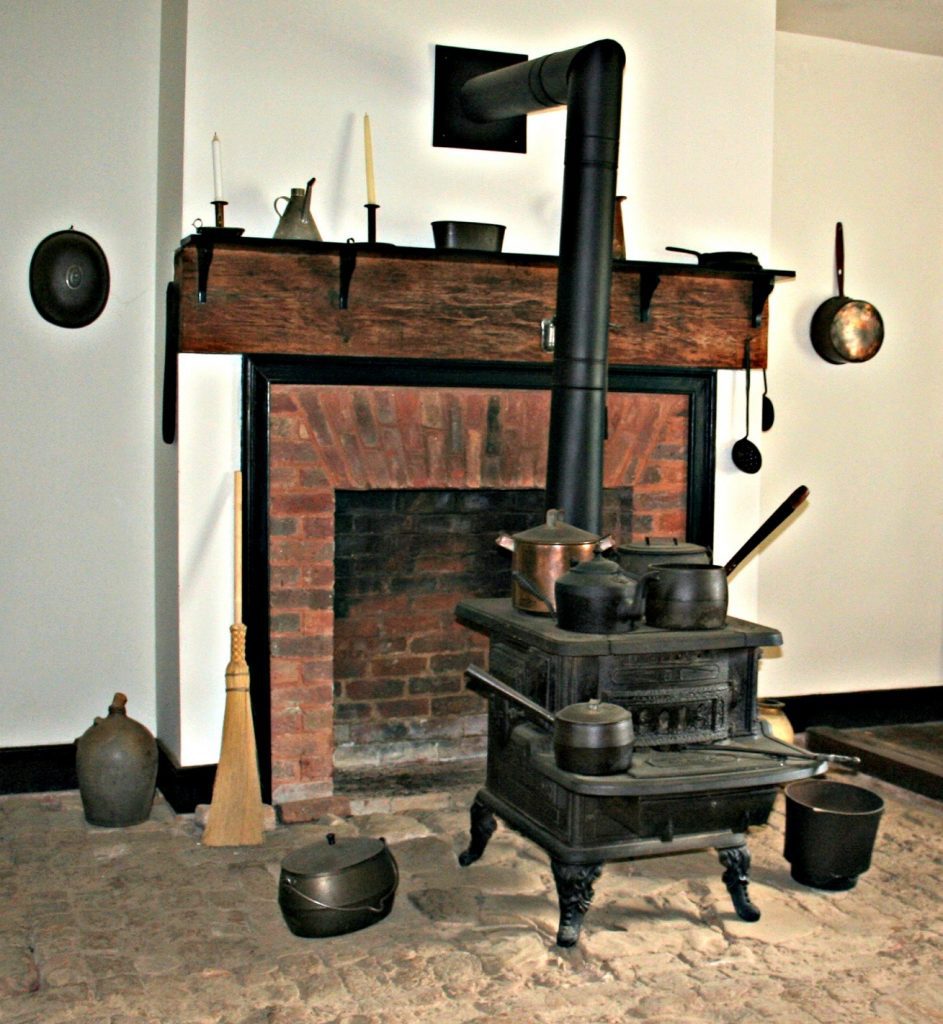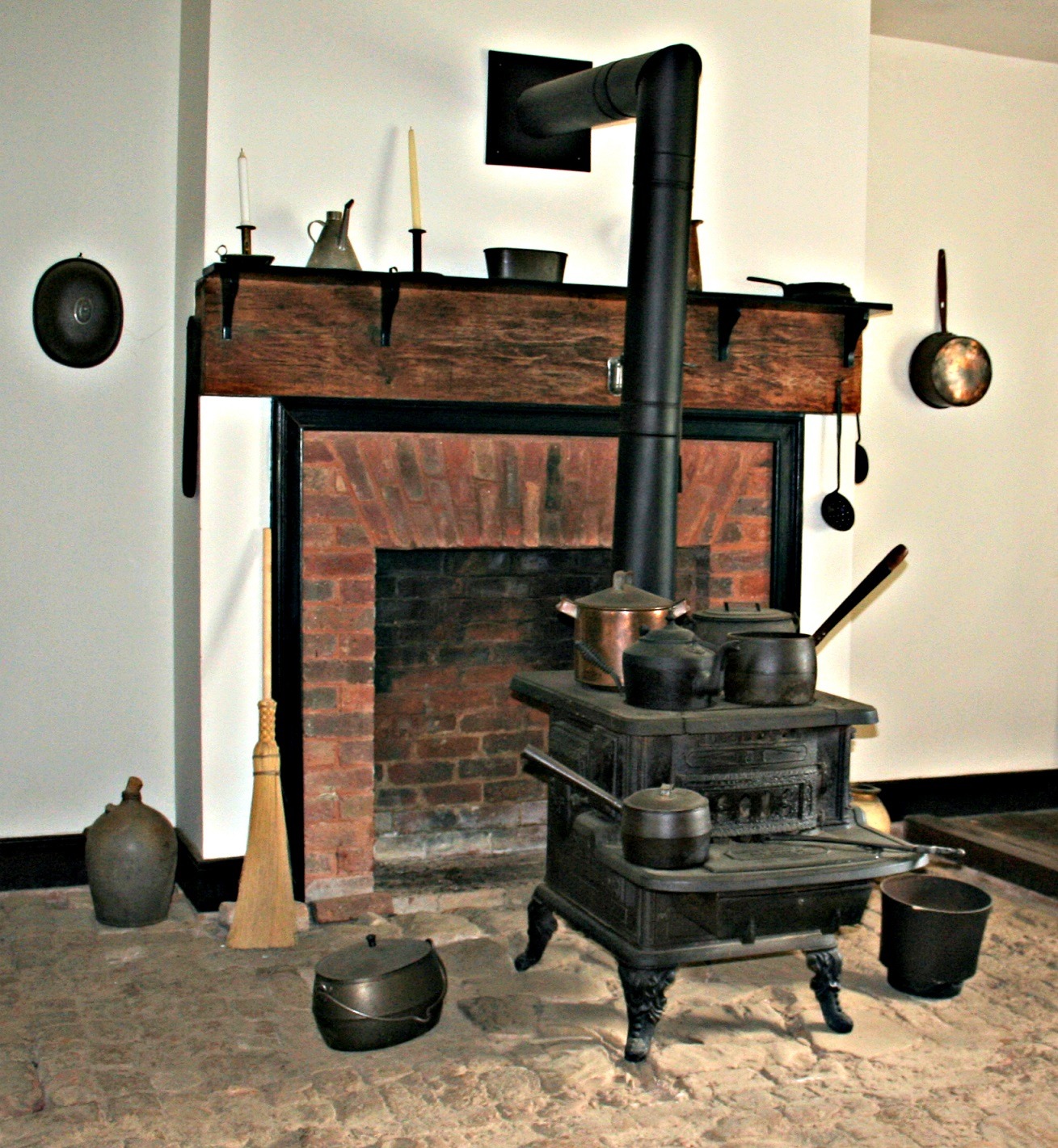Many Americans choose the option of having their homes built with an unfinished basement, if they are fortunate enough to live in a part of the country where soil conditions and the water table allow for building basements on homes. Few start out with this extra space finished, banking it for the day when they need more space for their growing family. When that day comes, they typically add another bedroom or two, perhaps a small storage room, a bathroom and a family room.
Heating that basement can be a bit problematic, as the home’s HVAC system is not usually sized to heat and cool that area, as it is not a finished living area. Just adding vents into the existing ductwork means pulling heat away from the upper floors of the home, not something to be desired. This leaves those families with the choice of replacing their existing HVAC system or adding in a separate system, zoning the basement separately.
Another option is to install a wood burning stove in the basement for heat and not worry so much about cooling. This works as long as the family room is used regularly, so that the wood burning stove is not left unattended. As for cooling, the basements of most homes are cooler, since they are underground; so it’s not as much of an issue. Installing a wood burning stove in the basement is challenging and operating it is as well, but it’s a lot cheaper than installing a new furnace.
Wood Heat Versus Pellet Stove
One of the big questions to be decided when looking to install a wood burning stove in the basement is whether to go with wood fuel or pellets. For those unfamiliar with them, pellets are sawdust and wood chips, pressed into small pellets. They can be purchased from a large number of retailers, including Walmart, in 40 pound bags.
Wood burning stoves that burn wood logs can further be broken down into those which are catalytic and those which are not. Catalytic wood burning stoves do a secondary burn of the smoke and soot from the fire, improving the efficiency of the stove and making it more environmentally friendly. Some of these units reach an efficiency of 80%. They produce less fumes, which makes them safer to operate, an important consideration in an enclosed basement with limited ventilation.
Overall, there are many benefits to pellets over the more conventional wood. The biggest of these are that they are more energy efficient and produce more heat. That makes it more environmentally friendly. For a basement installation, dragging bags of pellets down to the basement can be easier than dragging split logs down there, especially if there isn’t a door giving direct outdoor access from the basement. A pellet stove doesn’t need to be attended as closely as one burning traditional logs, because the stove’s mechanism will feed the pellets into the combustion chamber from a hopper. But buying and operating that pellet stove is more expensive, especially compared to cutting one’s own wood. It also requires electricity to operate, so will not work as emergency heat for the home.
Another important point to consider is the installation of these units. While both need some sort of chimney or stove pipe, pellet stoves need less of one, reducing the complexity of the installation. Between that and the ease of maintenance, pellet stoves are a clear winner for many people.
The Big Problem – The Chimney
Because any wood burning stove is burning wood, even if that wood is in the form of pellets, it’s going to require some sort of chimney. This can be challenging in an existing home, as that usually means running the chimney through some living areas in the home. Few homes are built with a space reserved for a chimney, which means that space will have to be taken out of a room or a closet. This problem is even worse in a two-story home, as the chimney must go through two rooms.
There is a way around this, by running the chimney out of a basement window and up the outside of the house. While not as attractive an option, this saves the room that would otherwise be taken out of the living areas of the home, while making the installation much simpler. In most areas, the chimney must go up three feet above the highest point of the roof of the home; so that could end up being a rather tall chimney.
In order to do this, the typical way is to remove one of the basement window panes, replacing it with a piece of 22 gauge aluminum, which has a hole cut in it just slightly larger than the outside diameter of the chimney. The gap between the two is filled with fireclay, bonding the pieces together and forming an airtight seal. As the chimney goes up the side of the house, it needs to be attached to the home’s framing with standoffs and hardware.
Running the chimney through a basement window is only a legal option in cases where there is another basement window that meets building code requirements as an emergency egress from the home. If there is not, then a hole will have to be made through the basement wall for the chimney to go through. This usually means making a hole through the concrete basement wall, which is difficult. But it can be done. In the case where the upper part of the basement wall is wood frame, such as might be the case for a home built on the side of a hill, the chimney can go out through the wood framed part, as long as the same precautions are taken as for going through floors in the home.
Another option to consider here is enclosing the chimney in a wood-framed and sided box, making it look like a chimney that was installed when the home was constructed. While this is more expensive, it will improve the overall look of the home, something that might be important at sale time.

Installing a Wood Burning Stove in the Basement
The first part of installing any wood burning stove is finding a location for it, where there is enough room to install it safely and there is good access for the chimney, whether that is going through the rooms above or through a window and running up the outside of the house. Building code requires that wood burning stoves be located three feet from any wall, unless that wall is masonry. That three feet can be overcome by mounting a thick steel sheet one inch away from the wall, creating a heat shield for the flammable materials in the wall.
Unless the floor is made of an inflammable material, like concrete, a hearth will be needed. This is an area of floor that is fireproof, whether because it is covered with ceramic tile or brick. The hearth does not have to be raised up off the floor, but typically is. The hearth must stick out at least 16” in front of the stove and at least 8” on the sides.
The wood burning stove is then placed on this hearth and the chimney is run. For inside chimney installations, it is necessary to cut hole through the ceilings and floors between it and the roof. A plumb line or laser level should be used to ensure that these holes are directly over each other. Take care to avoid floor and ceiling joists, as well as the roof rafters. The stove pipes used for the chimney must be rated for wood burning stoves, and are typically a different size (diameter) than those used for a fireplace.
The stove pipe from the wood burning stove to just shy of the ceiling can be single-wall, allowing it to radiate more of the heat from the fire. But once the ceiling is reached, an adapter is installed, so that double or triple wall chimney pipe can be used above that point. Double wall chimney pipe has insulation between the outer and inner layers, keeping the outside of the chimney from being hot. Triple wall chimney pipe creates two air spaces outside of the one the smoke is rising up. Cool air from outside travels down the outer of these, and is heated as it enters into the inner one, causing it to rise and keeping the outside of the chimney cool. Use of either of these meets building code, protecting the building materials in the home from becoming hot enough to cause combustion.
Running the chimney out through a window and up the side of the home is considerably simpler, once the window has been removed and replaced with a sheet of 22 gauge aluminum, with the appropriate sized hole in it. Double or triple wall chimney pipe is still required, because the chimney is within 18” of the home’s walls, which are assumed to be made of flammable material.
Please note that local building codes may be different in different municipalities, changing the requirements for what types of chimney pipe may be used. Some municipalities do not allow double wall, but only triple wall chimney pipe for installation in occupied spaces in the home and the attic. The required distance between the stove and the walls or the front edge of the hearth can vary as well.
Heating the Home with the Wood Burning Stove
Generally speaking, any wood burning stove is only going to heat the room it is installed in. However, there are wood burning stoves which produce enough BTUs of heat to provide heat for the entire basement or even into the upper floors of the home. The problem is, that heat is usually trapped in the room that the wood burning stove is in, as the stove doesn’t have ductwork and blowers to carry the heat to the rest of the house.
Since the wood burning stove will be mounted in the basement, there will be some heat that will radiate through the ceiling up into the main living area in the home, but this will be a very inefficient heat transfer, with little heat making it up through the ceiling and floor. Some older homes have vents in the floor, looking like regular heat registers, but actually opening up into the basement ceiling, to help facilitate this heat transfer. While that is an improvement, it is still not very efficient.
Many basements are closed off from the rest of the home by a door. As part of the basement finish, removal of this door should be considered. That will allow the warmer air from the basement to rise up into the living areas. Of course, that door might be needed in the summertime, so as to keep the air conditioning in the living area from cooling the basement. One option to consider is a sliding pocket door, where the design of the home makes it possible. Another is to have someplace for the door to fold out of the way when it is not in use.
The key to getting excess heat from the wood burning stove in the basement up into the upper rooms of the home is to increase the amount of air flow, through the use of fans. Small fans can be mounted into the vents mentioned in the last paragraph or installed in the area above the basement door, where transom windows used to be installed on homes. The same thing should be done for other rooms in the basement, ensuring that the heat from the stove warms those rooms as well.




